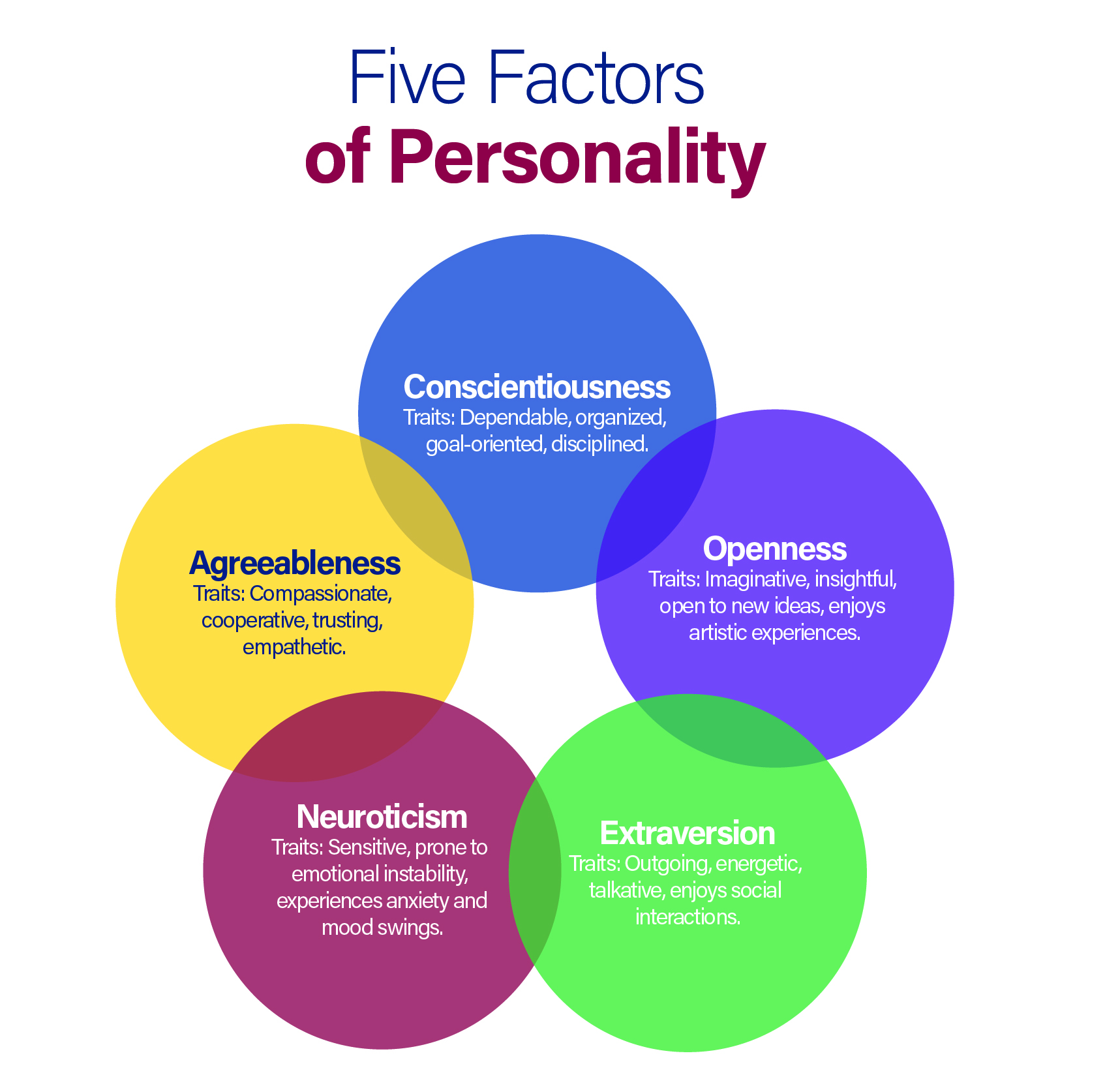Register now and start:
- Accessing PAR Training
- Shopping PAR products & tools
- Using online assessments with PARiConnect


The Five-Factor Model of Personality, also known as the Big Five, is a widely recognized framework in psychology that describes human personality through five broad dimensions: Openness, Conscientiousness, Agreeableness, Extraversion, and Neuroticism. These traits help us understand individual differences in behavior, thought patterns, and emotional responses. Each trait represents a spectrum, and individuals can fall anywhere along the continuum for each trait. This model is used in various fields, including psychology, human resources, and personal development, to assess and predict behavior and performance.
Learn more about the five factors of personality and the key traits associated with each one below.

The five domains of personality are measured using standardized tools like the NEO Inventories (Normative Update), which assess individual traits through a series of carefully designed questions. These psychological assessment tools provide reliable and comprehensive insights into personality, helping individuals and professionals understand and predict behavior. Discover your personality profile today and unlock new insights into your personal and professional growth!